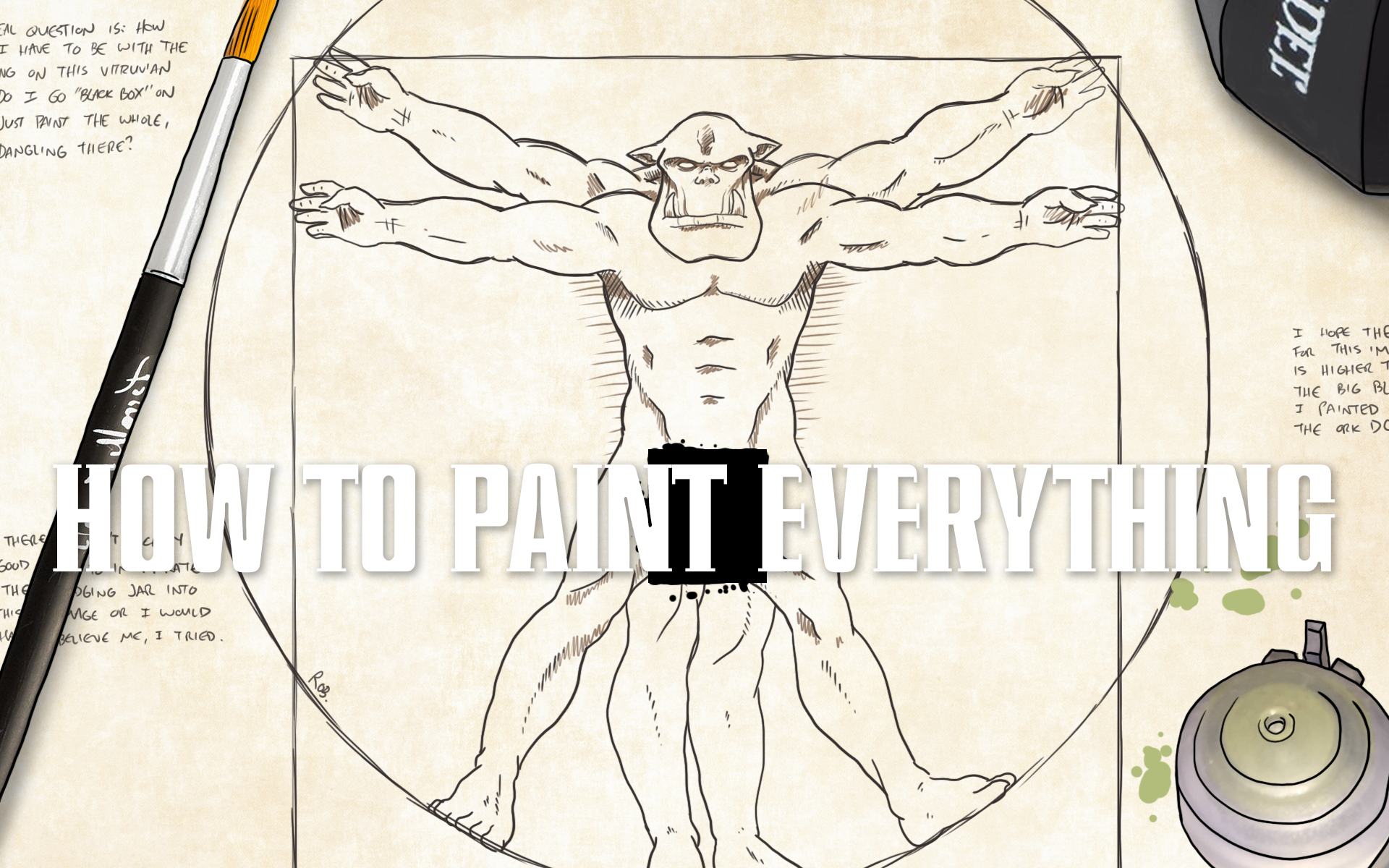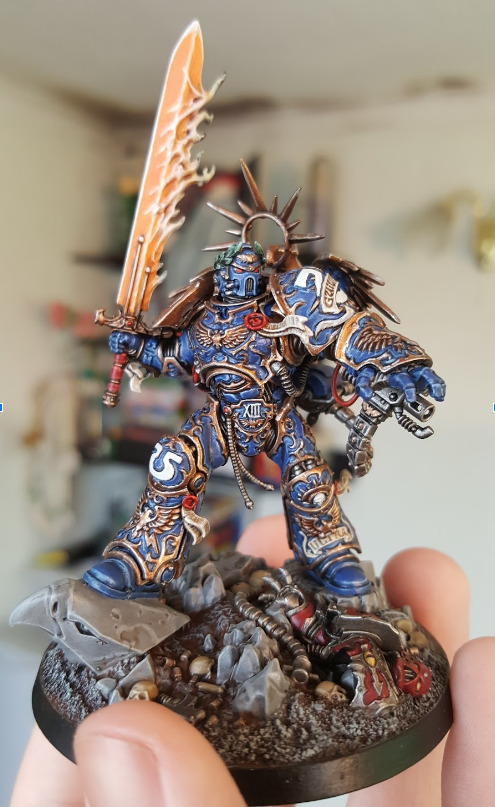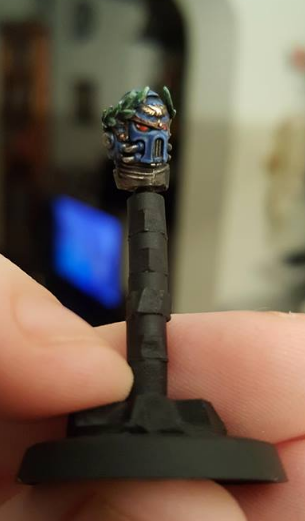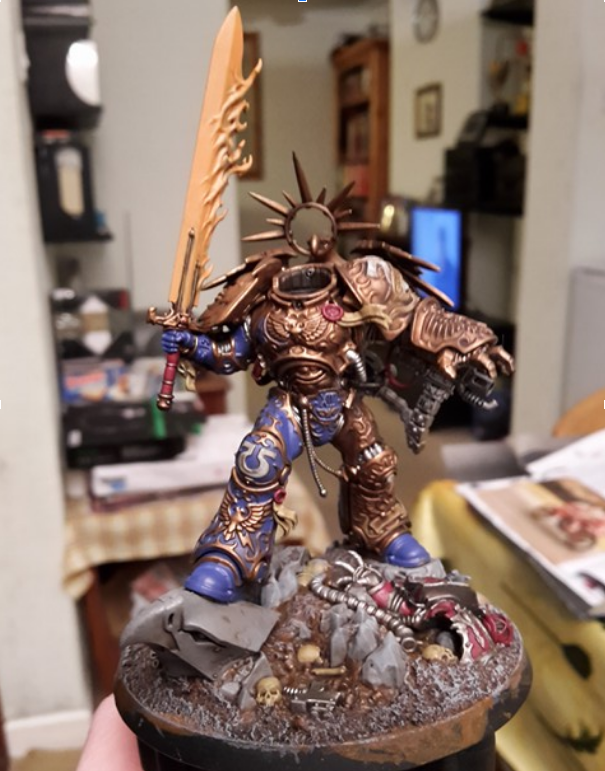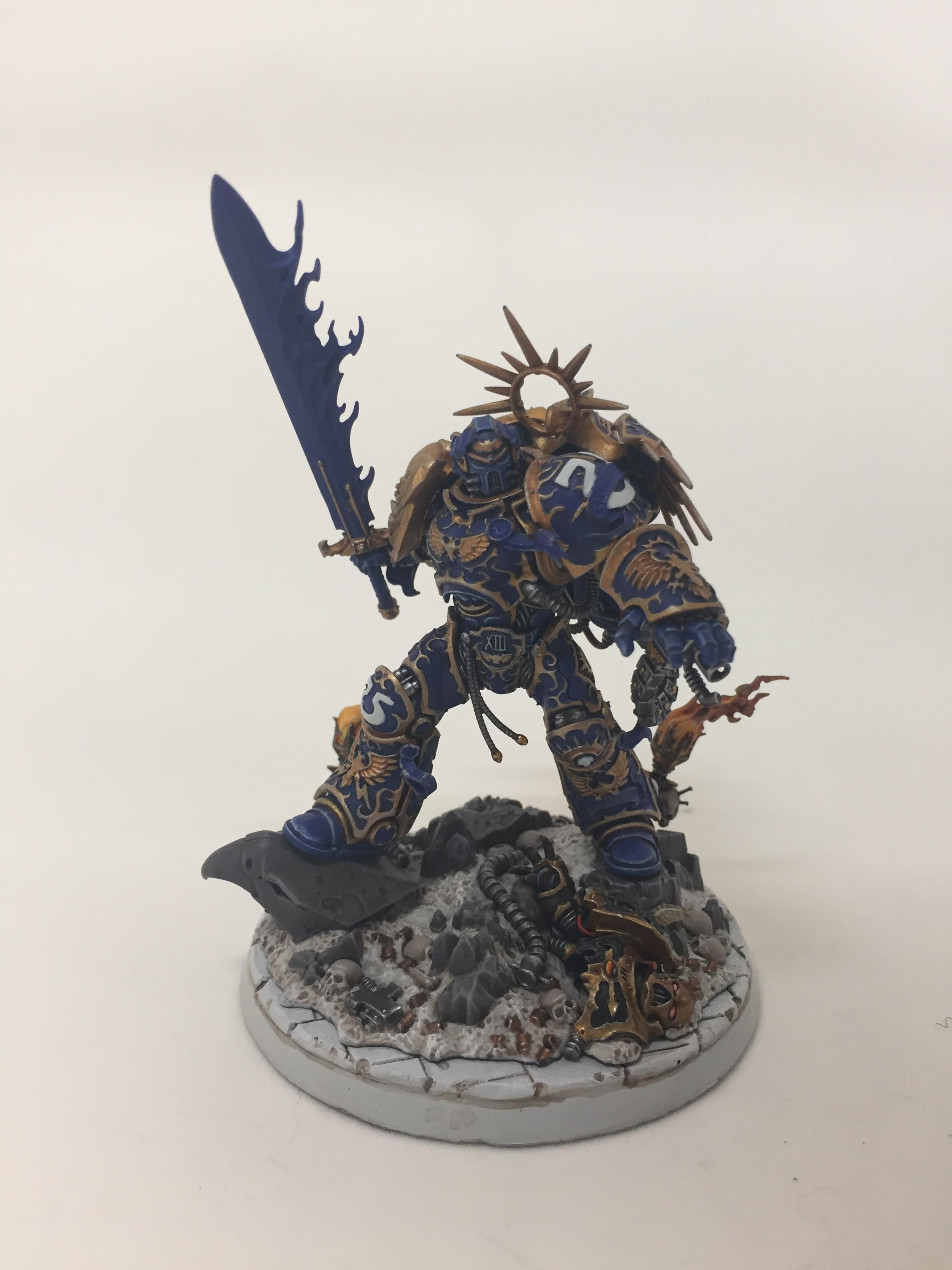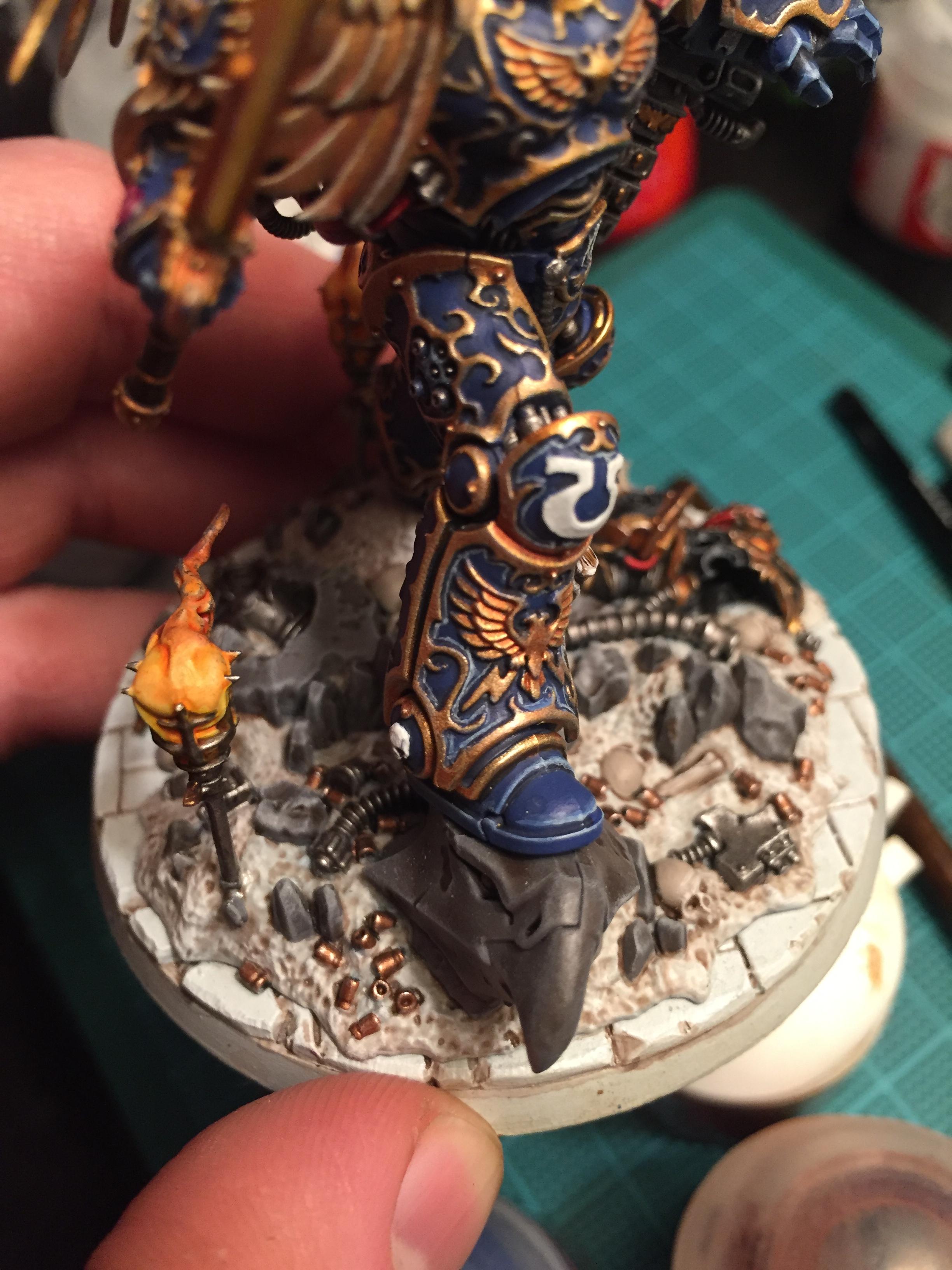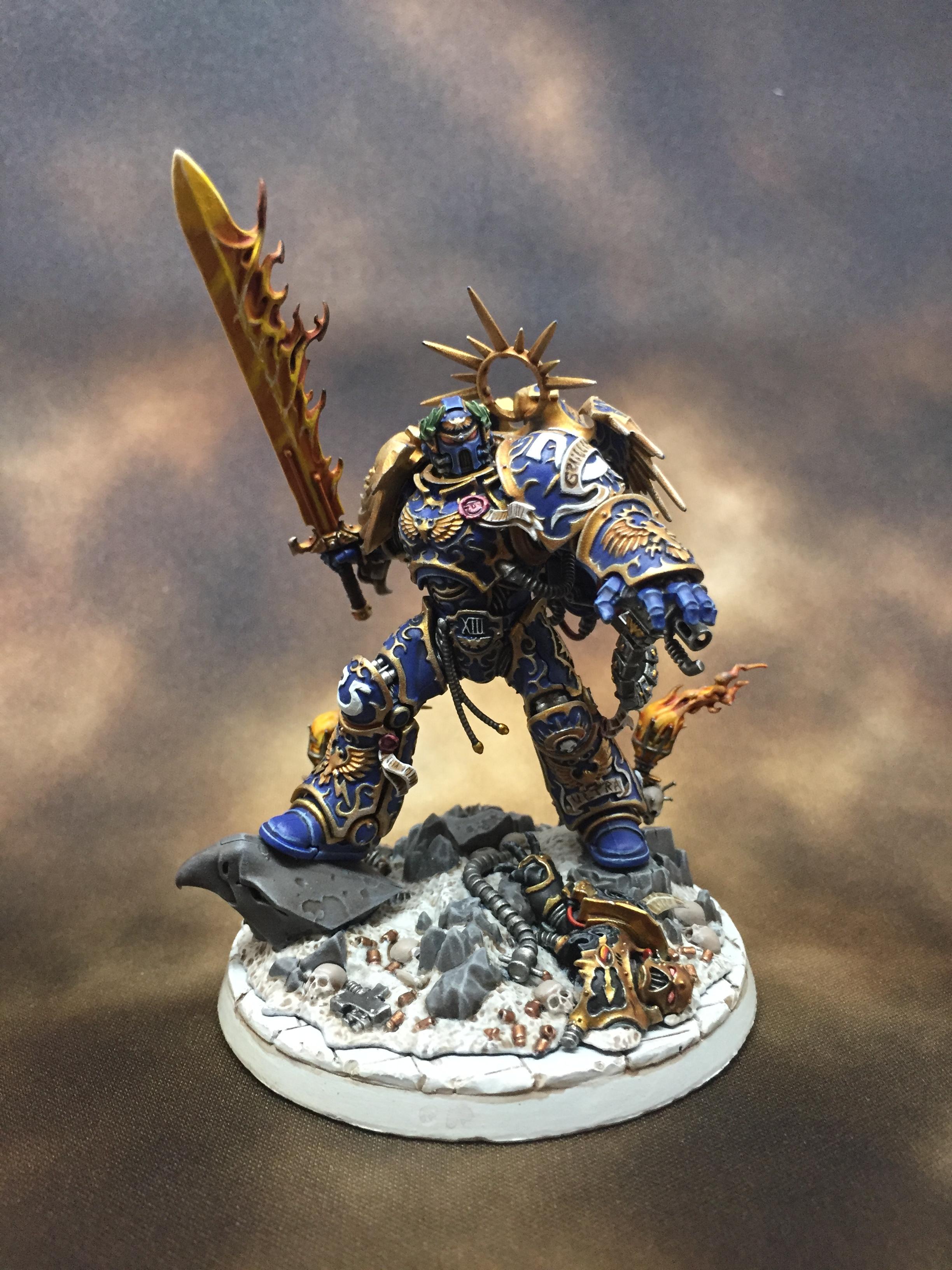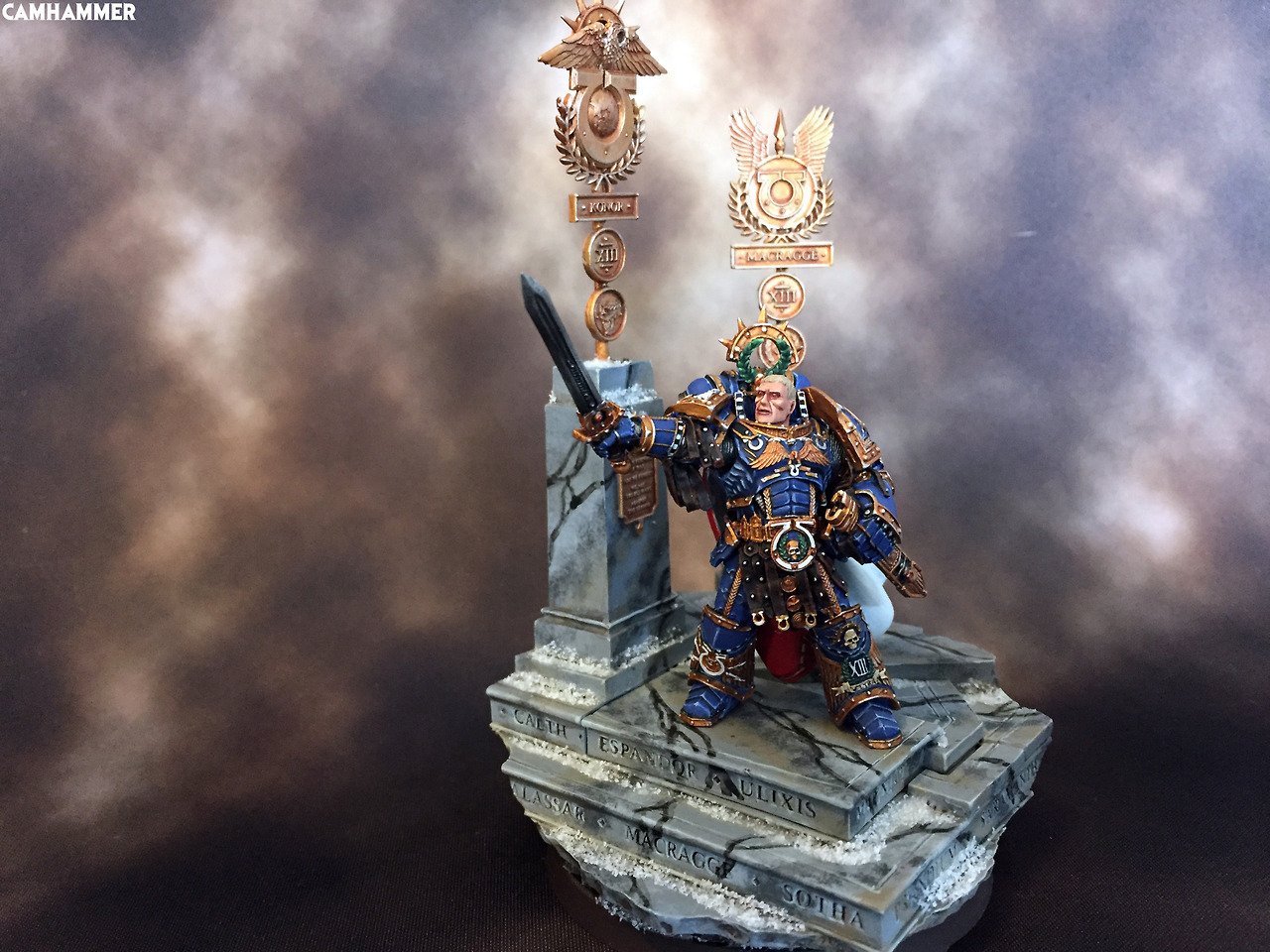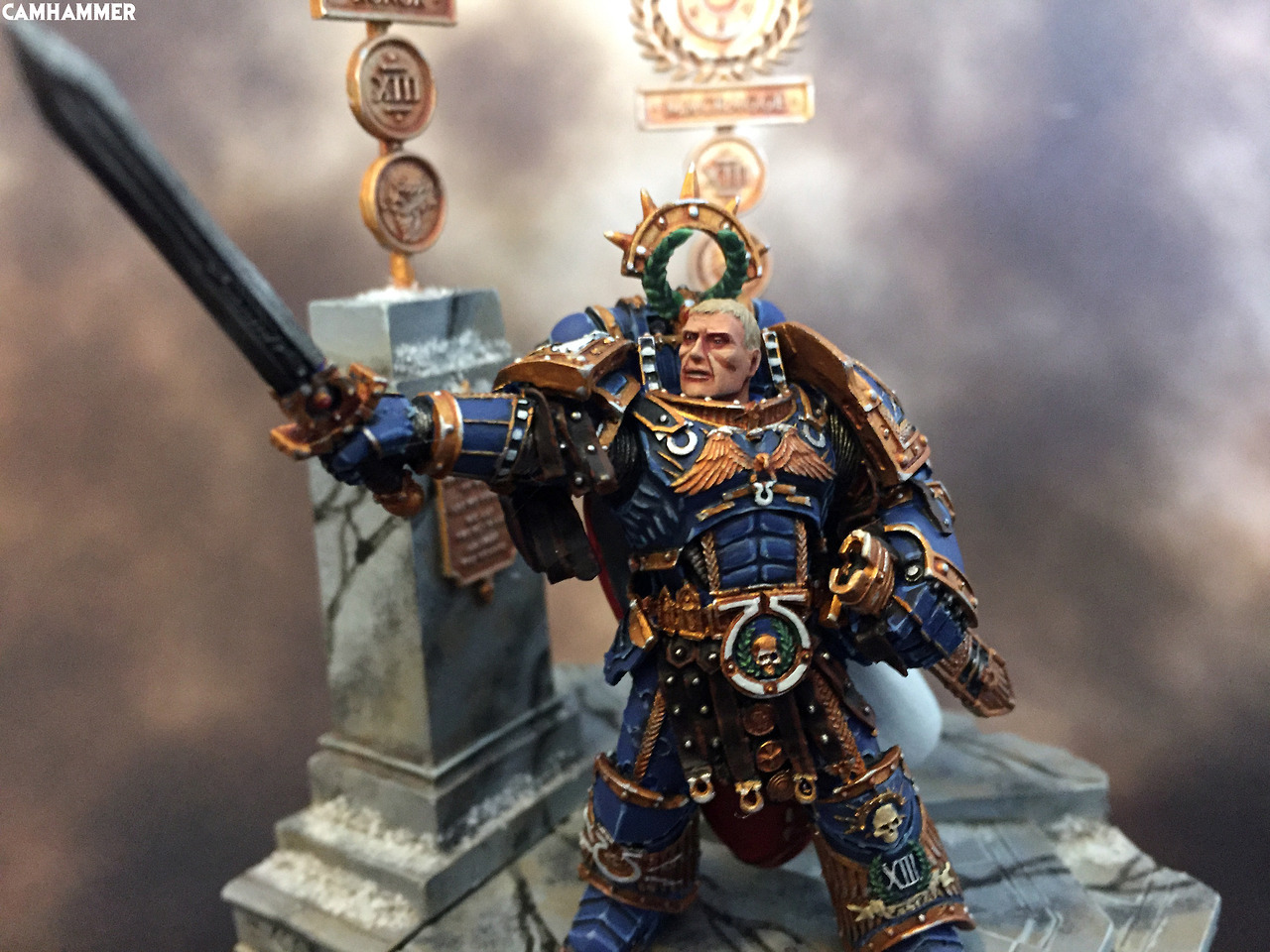In our How to Paint Everything series, we take a look at different armies of the Warhammer universe, examine their history and heraldry, and look at several different methods for painting them. In this chapter, we’re looking at how to paint the primarch of the Ultramarines and current Lord Protector of the Imperium, Roboute Guilliman.
Roboute Guilliman is unique among the Primarchs in that he tends to see his role and the role of space marines as being less about conquest and violent murder and more about building empires. Guilliman did more than any of his brothers to preserve the Imperium following the Emperor’s death and sees space marines as warrior-statesmen, as responsible for the day-to-day running of the Imperium as they are for putting down rebellions and enemy actions.
During the Horus Heresy, much of the Eastern Fringe was cut off from the main Imperium by the Ruinstorm, a massive warp storm engineered by Lorgar and Erebus. It was during this point that Guilliman and his brothers lost contact with the Imperium and, fearing it lost, Guilliman began to lay the groundwork for a second Imperium to replace it, the imaginatively named Imperium Secondus. In fact, records show he might have been planning his own Empire well before the Heresy, suggesting he might have had designs of his own for some time. Basically, building empires is a big hobby for Guilliman, so it’s no surprise he was the one who took over after the Emperor ate it.
Guilliman is the architect behind much of the modern Imperium’s military structure, including the Codex Astartes, the doctrine of the space marine chapters, that governs their basic organization and tactics. It was his idea to split the space marine legions into chapters after the Heresy, something that almost caused a second civil war when some of the legions initially refused to break up. This was notably easier for the Ultramarines to do, as they’d been largely cut off from the worst fighting of the Heresy, and so had the largest numbers left over when everything was done. Guilliman led the Ultramarines across the galaxy following the Heresy, rooting out the remaining traitor forces and killing a few Alphariuses along the way. During this period, he tasked Belisarius Cawl with creating the next generation of Space Marines and finding a way to revive him if he ever died, two bets that would pay off huge in time.
Guilliman eventually ate it fighting the mutated Daemon Primarch Fulgrim aboard his cruiser, but his body was recovered and kept in stasis for 9,000 years. He was eventually revived by Yvraine following the destruction of Cadia, and kept alive using the armor Cawl had designed for him. His first order of business was to fight his way back to Terra, where he had a heart-to-corpse with the Emperor, and his second order was to activate the Primaris marines, whom Cawl had been keeping on ice for a long time. At the head of the Primaris armies, he fought his way through the half of the Imperium on this side of the Cicatrix Maledictum, freeing worlds that had been seized by the forces of Chaos. He’s also been running the Imperium, something he always wanted to do, although now he spends most of his time frustrated and upset over how backwoods and superstitious the Imperium has become since his death.
Table of Contents
Covered in this Article
- How to Paint Roboute Guilliman’s plastic model for Warhammer 40,000
- How to paint Roboute Guilliman’s resin model for Horus Heresy
Painting Guilliman
As a primarch, Guilliman is huge. He’s a literal monster (check his keywords list). He’s also a fantastic centerpiece model, but that makes him pretty daunting to paint. While he’s not the most complicated kit on the market, the sheer amount of detail going on with his armor combined with the flame effects on his sword and some of the more fiddly pieces can make him a tough project to take on, particularly for less-experienced painters. In this section, we’ll look at three different approaches to painting Guilliman.
Artum's Method - Click to Expand Modeling Note: My Guilliman involved a little bit of conversion work – I used a combination of brute force, ignorance and poly-cement to re-position Guilliman’s sword arm such that it was posed about to swing down on some poor bastard rather than just held generally at his side and had some lofty notions of magnetising both head options, but due to a combination of not being a huge fan of his face sculpt and the glue setting such that one of his ears is slightly inside his skull i never got around to painting it. The stand I’d cobbled together for the heads did come in handy when painting the helmet however. Originally I’d built him with the small braziers on the base but picking him up wrong exactly one time and hearing a small tick put a stop to that. I went with the official scheme for the most part; Macragge Blue base, Nuln Oil, blocking Macragge back in then a first highlight of Calgar Blue and a second highlight of Fenrisian Grey, with Kantor Blue used to tidy up any spillage into shaded blue areas. The gold is one of the older schemes (thanks duncan) of Balthasar Gold shaded with Agrax Earthshade, layered with Ghenna’s Gold with a final highlight of runefang steel which is a real favourite of mine though it has the fairly serious demerit of looking absolutely terrible until you apply the runefang which can be a bit demoralising on a longer project, the reason being that ghenna’s is a very dark and orangey gold which doesn’t read as proper ultramarines until the silver brings it back up again. I’m not a fan of the more purple wax/electrum/whatever purity seals the studio paints these days so instead I go for the nice striking red of Khorne Red base shaded with agrax layered with Mephiston Red with a general highlight of Wild Rider Red and a point highlight of Troll Slayer Orange which provides an eye-catching colour for purity seals to be the accent pieces they generally are. The parchment seals and script in general were a Zandri Dust base hit with Agrax at the same time as everything else requiring it, followed by fairly thin Ushabti Bone layered in brushstrokes perpendicular to the parchments length without being too thick to give it some texture, with Pallid Wych Flesh as a highlight and then heavily watered down Rhinox Hide and a Size 0 brush to squiggle in script or write as required. The sword’s my least favourite part of the model paint wise, I’d unwisely started from a base of Jokaero Orange which turned out to be a touch too dark and worked that up towards fire dragon bright and troll slayer orange, with the streaks in the fire being Ushabti Bone with lines of White Scar with a small amount of thinned Abaddon Black A better colour group for painting fire as the sword never quite read as properly luminous the way that a well-painted plasma coil will. After assembling and priming Guilliman I left him collecting dust in my project box for about 6 months because I wanted to do him right, eventually you just have to take the plunge.
Most guides for Guilliman work from a Retributor gold undercoat but I find it a lot better to look under something and have it be black rather than a lustrous gold when I forget to paint it. So instead I went for a black undercoat, putting on a single coat of gold across the armour plating and shading it, following that up with the regular metal in the joints and shading that. A lot of guides go for doing all of the stages of the gold before working on the blue but as quite a messy painter its much easier to repair one step of gold than it is to do three.
At the end of the flames to imitate it dissipating. Things I Wish I’d Known Before I Started:
Things I Would Do Differently If I Had to Paint It Over:
Other Notes For Painters:
JD Reynolds' Method - Click to expand When working on Guilliman, I used sub-assemblies breaking him up into four parts: the body, the backpack, the base, and the head. This is very important, especially for the back. You’re going to have a hell of time if you don’t at least keep this part separate. Being a person utterly lacking in creativity most of what I have done can be accomplished with regularly GW paints: I’ll just be lazy and say I followed Saint Duncan’s video on this and it worked out very well. I am sure there are more impressive methods, but this is great if you lack any real artistic skill. The ‘Eavy Metal team added a series of very thin blue line highlights on each blue armor segment. This is VERY hard to replicate, which you can see my initial attempts in the final picture. I hated how this turned out, and I ended up painting over them with Maccrage Blue and shading the area. This is a hard one to answer. I would likely do much of the same, but “better” it has been over two years since I painted this model, and while I haven’t changed my method of painting, my ability to perform has improved significantly in that time. I might try to find another method of painting the sword that emphasizes its incandescence. Remember, painting Guilliman any other fashion is heresy, and in direct conflict with the Codex Astartes. The Blue Parts
The Gold Parts
The Sword
Things I Wish I’d Known Before I Started:
Things I Would Do Differently If I Had to Paint It Over:
Other Notes For Painters:
Campbell McLaughlin's Horus Heresy Guilliman - click to expand There’s more than one Guilliman model, and some of us feel like the resin Heresy model is superior to the plastic version. There’s certainly a very strong argument to make there, and either way it’s worth addressing that model as well.
Final Thoughts
